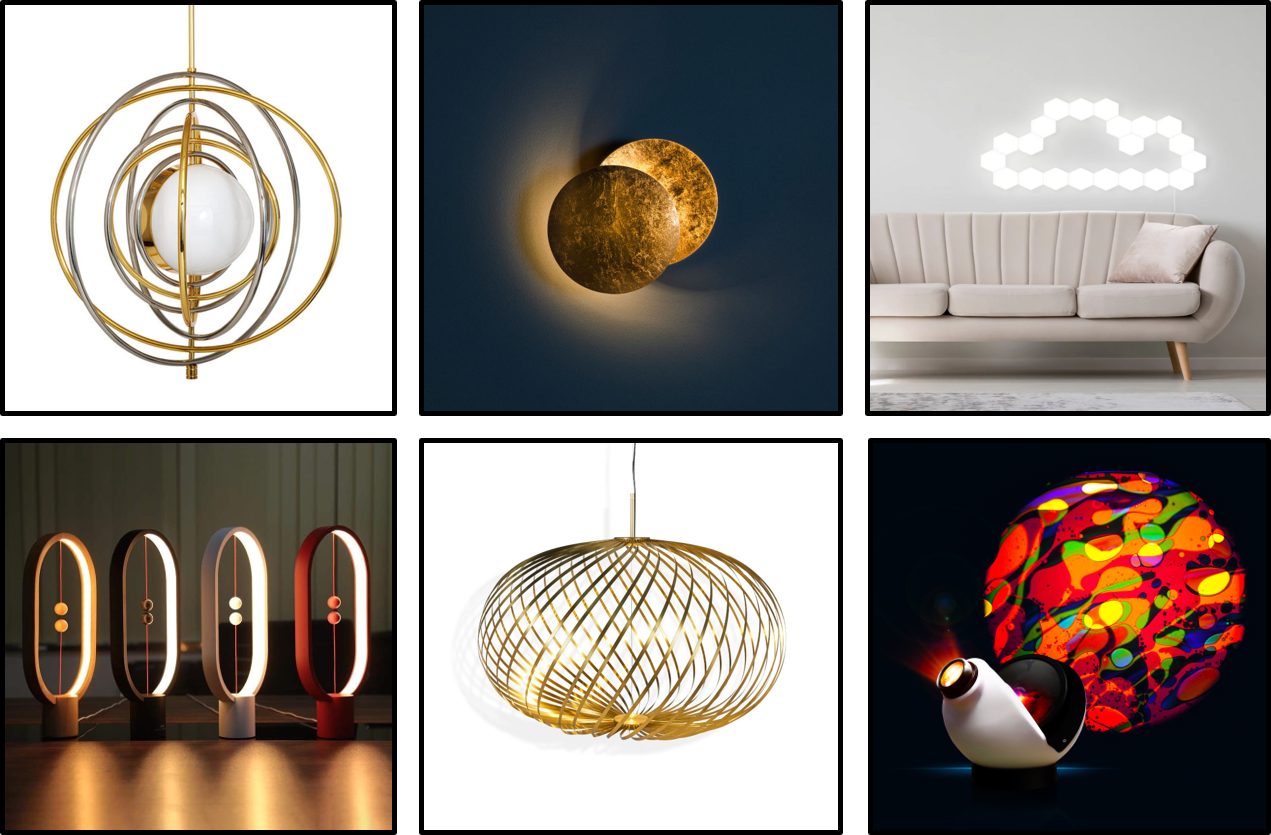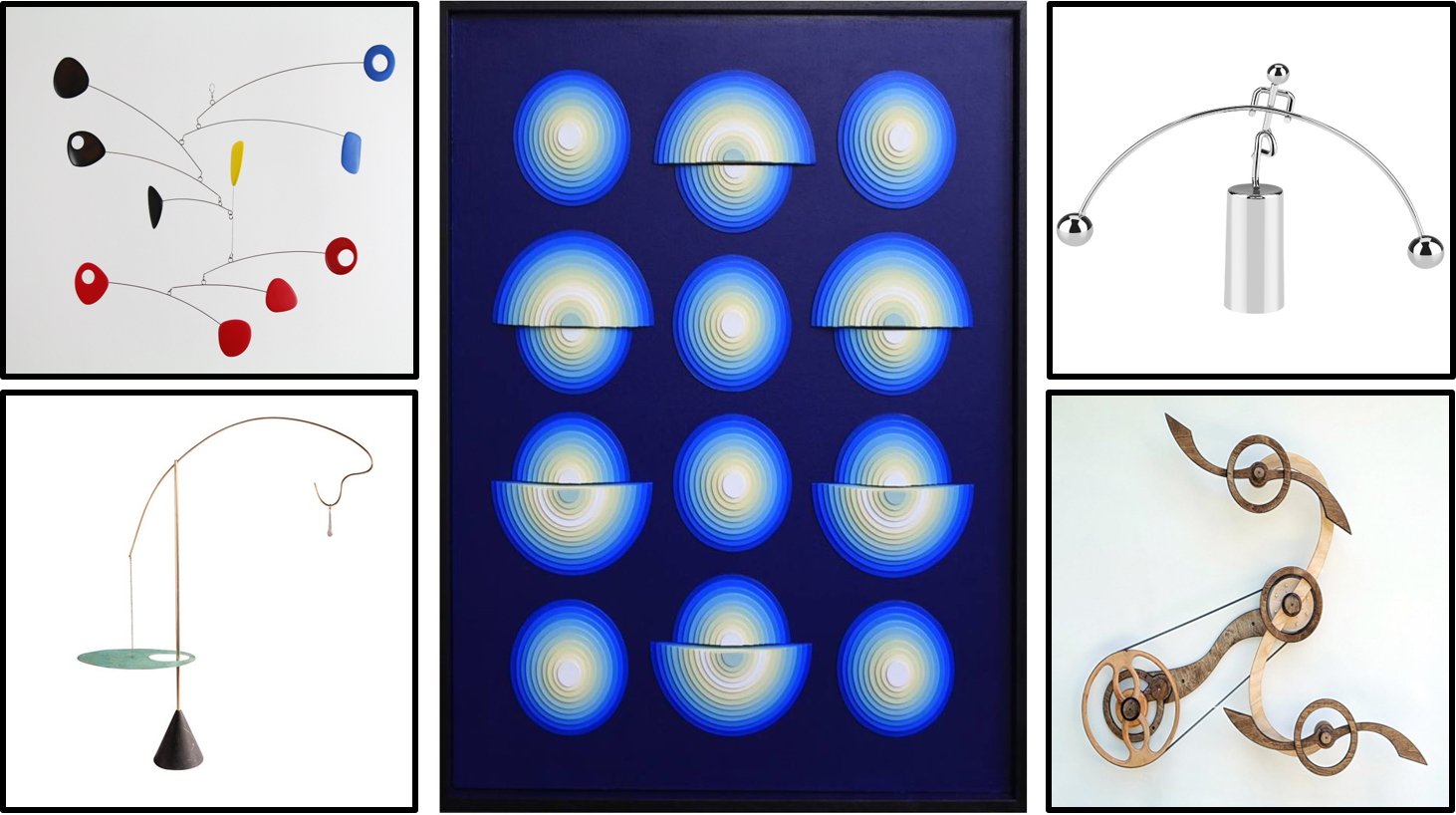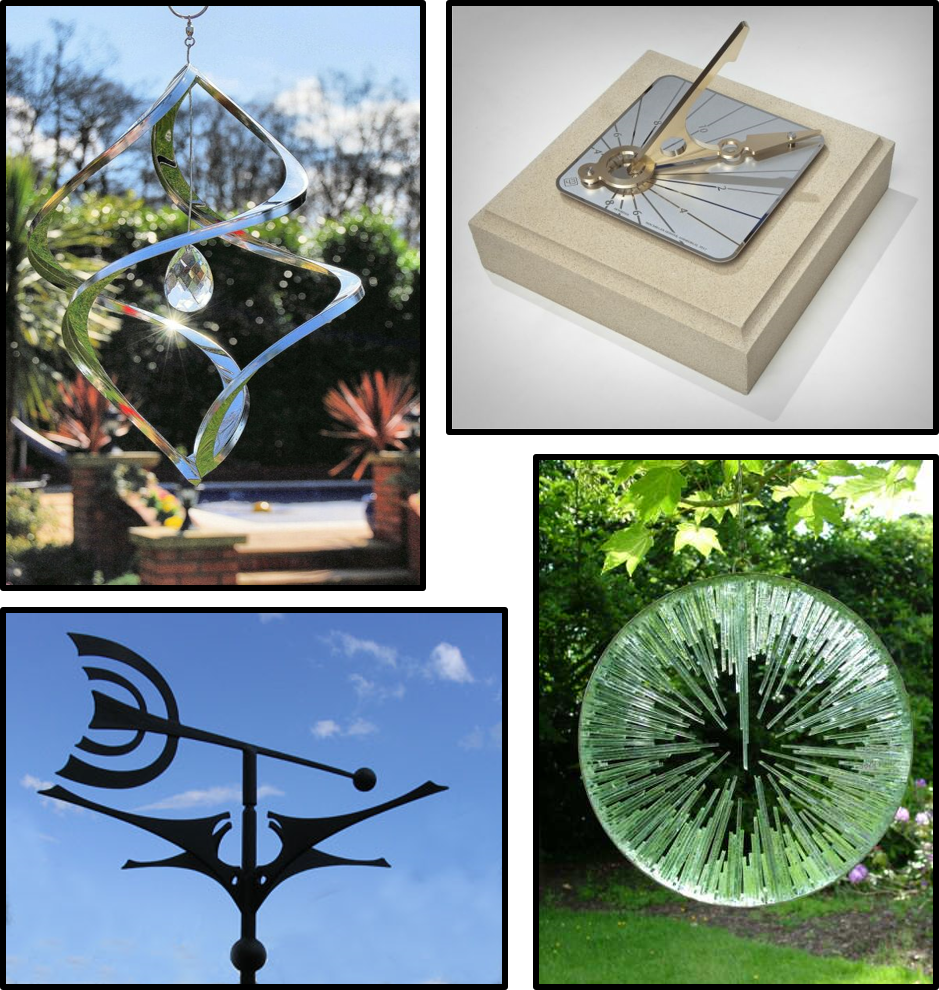Our interior design partners J&D Design explore the kinetic art movement and discuss how to bring it into your home.
The adjective kinetic has its roots in the Greek word kinesis, meaning “motion”. So what is kinetic art? The simplest definition is “art that depends on motion for its effect”.
Kinetic art is a form of modern art which developed during the during the Impressionist movement, continued through the Dada and Constructivist era of the 1910s, and came into its own after the Second World War with a genre-defining group exhibition- ‘Le Mouvement’- held in Paris in 1955.
Many kinetic artists were interested in analogies between machines and human bodies. This idea has deep roots in the Dada movement, however it is also related to the mid-century concept of cybernetics. The Swiss artist Jean Tinguely, one of the mid-century pioneers of kinetic art, declared “The only stable thing is movement.” His sculptural machines expressed his view that all that mattered was “To live in the present.”

Electrum Kinetic Chandelier, £1,095.00, Jonathan Adler; Applique Lederam Wall Light, £409.00, Made in Design; Right Light Advanced Touch Wall Lights, from £89.99 (for 3 pieces), Decoramo; OPTI Aura Sensory Projector, £173.95, Glow; Spring Pendant, from £650.00, Tom Dixon; Heng Balance Lamp, from £29.99 Amazon
Kineticism was introduced across several artistic media, including painting, drawing and sculpture, and many kinetic artists sought to work with ever newer and more public media in order to bring the style to a wide audience. Artists associated with a broadly Constructivist approach to Kinetic art include Naum Gabo, László Moholy-Nagy, Victor Vasarely, and Bridget Riley, many of whom borrowed concepts from fields such as physics, optics, and cybernetics.
Naum Gabo’s Kinetic Construction (1920), arguably the prototype for all subsequent kinetic art, was designed to express the concept of the “standing wave” – a type of wave-motion creating the illusion of a static, curvilinear form – while the Op Art pioneer Victor Vasarely based his visual tricks on studies of the ocular perception of line and colour. New conceptions of the relationship between time and space were established by the work of theoretical physicists such as Albert Einstein and provided a cultural context for the fascination with movement evident in kinetic art.

Kinetic mobile, £155.00, Etsy; Spotlight 3 Sculpture by Valerie Lallican, £1,223.00, Saatchi Art; Mini Cradle Balance Balls, £6.59 Amazon; Kinetic Wall Sculpture, Sea Dream £1,015.58 (Classic edition this piece is number 3 of 79), Etsy; Astrid Luglio – Partenope Kinetic Sculpture £1,795.00 Artemest
The interaction of science and kinetic art was arguably most strikingly expressed by Nicholas Schöffer’s “Spatiodynamic” sculptures of the 1940s-50s, intelligent machines whose movements and physical activities altered according to changes in their external environment. These works were influenced by the then newly established field of cybernetics, which posed a series of analogies between human and artificial intelligence.
By the mid-1960s kinetic artists and their work were increasingly recognised; Julio Le Parc, a pioneer in interactive kinetic art, was awarded the Grand Prize for Painting at the Venice Biennale in 1966 and Nicolas Schöffer won the prize for sculpture in 1968; the Galerie Denise René celebrated ten years of kinetic art in 1965 with a group show entitled Le Mouvement 2.
Kinetic art is still prevalent today, and styles include mobiles and mechanical sculptures as well as 2D Op-art paintings, which create optical illusions appearing to rotate or vibrate in front of the eyes. As with many aesthetic tendencies, kinetics manifested as a creative culture long before it appeared in fine art. Probably the earliest example of artistic kinetics is the wind chime, which was in use at least 5000 years ago throughout Southeast Asia, exemplifying exploration of the sacred and the interconnectedness of humans and nature.
A vast range of individual artists have employed movement in their work in one way or another since the 1960s, some of them influenced by kinetic art and almost all of them by the same principles that informed the movement.
In this blog we highlight examples of contemporary artists with work in different genres of kinetic art. Examples include Spotlight 3 Sculpture by Valerie Lallican, Shattered Lens by Jane Bohane and the Electrum Kinetic chandelier by Jonathan Adler.
J&D Design specialise in the application of colour and design, and provide clients with personalised design services, including interior design, commissioning artworks, lighting schemes and garden landscaping. In addition to their range of personalised design services, J&D Design offers a remote E-Design service and gift vouchers, with exclusive discounts for Marsh & Parsons’ clients.
If you’d like to read more from J&D design, they’ve written plenty more for the Marsh & Parsons blog, from eco-friendly design tips to lighting trends for 2020.




